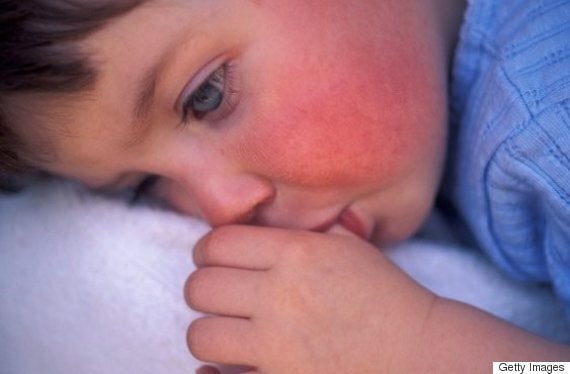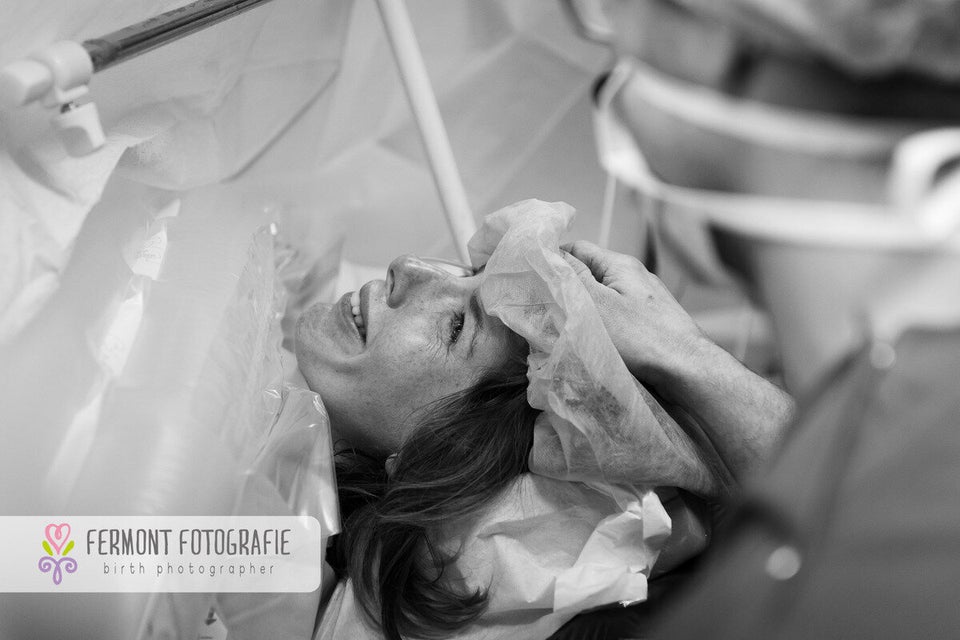A nasty name... but usually a mild illness for kids. For some, however, slapped cheek disease can pose more serious risks.
What is it?
Slapped cheek disease is a virus which causes a very distinctive red rash – it literally makes your child look like they have been slapped on the face.
Sometimes known as fifth disease (because it's one of five viruses which cause a red rash, the others being measles, rubella, roseola and scarlet fever), slapped cheek disease most commonly affects children between the ages of three and 15, although babies can get it too, and so can adults can if they have not been exposed to it before.

Passed around via coughs and sneezes, your child might have slapped cheek disease (and be merrily passing it around, unaware!) up to two weeks before they begin feeling poorly – if they do at all.
Sometimes, the first stage symptoms are so mild they go unnoticed, but if they do occur, they're likely to include a fever (of between 38°C and 38.5°C), headache, sore throat, lethargy, poorly tummy and itchy skin.
Up to a week after the initial symptoms show themselves, a bright red rash will appear on both cheeks and then, between one and four days after that, the redness will spread to the upper body, arms and thighs. This body rash might be raised and is likely to be lace-like in appearance. It might look more severe if your child becomes hot, either from going in the sun or (should they have the energy) running around.
While unpleasant, slapped cheek disease is usually mild and will clear up within a couple of weeks. Rarely, it can last much longer, and the rash can even return months later – but don't fret, your child won't have caught the illness again. The rash is actually a sign of their body's immune system working.
SEE ALSO:
New Nursery Rules, Not as Simple as A B C...
Sleep Tips For Parents: Expert Gives Advice On Bedtime Routines, Sleep Techniques And Co-Sleeping
What can I do?
Slapped cheek disease is a viral infection and therefore can not be treated with antibiotics. In the vast majority of cases, it'll clear up by itself fairly quickly.
However, if your child has a weakened immune system for any reason, or if they suffer from any condition known to cause chronic anaemia (such as sickle cell disease or thalassaemia), the NHS advises you seek medical advice immediately. This is because the virus which causes slapped cheek disease targets blood and bone marrow cells, so it can pose a danger for people who are already compromised.
Of course, if you are worried about your baby or child at any time, take them to your GP – usually a visual examination will be enough for a doctor to diagnose slapped cheek disease.
Once it is confirmed, keep your child at home at least until the rash has appeared on their body, particularly if you usually frequent places where there are other children and pregnant women.
While most adults are already immune, occasionally they can catch it – and for women in the first 20 weeks of pregnancy it can cause complications.
At home, it's a case of all the old favourites! Liquid paracetamol or ibuprofen will help with sore throats and headaches, as well as reducing fever. Ensure your child drinks plenty of fluids, even if they're off their food, to avoid the dreaded dehydration and allow them to rest and let the infection pass. If their rash is itchy, you could ask your GP or pharmacist about getting some liquid antihistamine, which should help reduce their discomfort.
What else could it be?
If your child's fever reaches 39°C or higher, it is unlikely they are suffering from slapped cheek disease. Always contact your doctor if you are concerned.
If your child initially seemed to have a cold, then developed red spots around their ears and neck (rather than large red patches on their cheeks), followed by spots elsewhere on their body, they might have measles.
